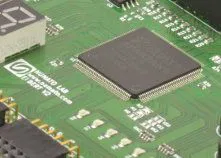Table of Contents:
The data collection and control modules from WisBlock include analogue, digital, environmental, location sensors. All this to create a functional Internet of Things (IoT) system with which to turn a desired object into a real monitoring and action centre. Raspberry compatibility is also welcomed.
Start with WisBlock Base Board


The RAK5005-O base board is the first carrier for our modules. It works not only with the protagonists of today’s article, the WisBlock Sensor, but also with the WisBlock Core MCU series and is suitable for IO extensions. The modular technology allows a variety of sensor types to be quickly attached to it, which will find application wherever reliable industrial management is needed. In addition to the convenience of up to three power options – because via a USB C port, a lithium polymer battery or a solar panel – the WisBlock Base Board Rak Wireless presents alternatives in the very functionality of the planned device. What does this consist of? If none of the modules meet our IoT requirements, we can use standard connectors to create our own multifunctional device.
Let’s recap: we get a comprehensive, modular WisBlock RakWireless system that was created for IoT dissemination using LoRaWAN. We can create an LPWAN device with it really quickly. On the material the production of an indoor environment monitoring device actually from scratch. What’s the best thing about this video? The tools needed – just your hands and a screwdriver.
https://www.youtube.com/watch?v=H-Y7vVfchek
LPWAN starting module
WisBlock LPWAN is a development module of WisBlock Core Rak Wireless. Following in the footsteps of its predecessor board, it is a basic component of the WisBlock system and at the same time designed to work with the WisBlock Base Board itself. The module has a very low current consumption of 2 uA (in sleep mode) fitting in with the economic standards we will describe in a moment. It has a high LoRa output power of up to 22 dBm in transmit mode and supports the BLE interface with an output power of up to 4 dBm. See the exact technical specifications of both modules on their respective product pages at Botland shop website.
- Wireless sensor network
- Environmental monitoring
- Wireless data transmission
- Data collection in industry
- Location and tracking of personnel, equipment or other moving objects
- Extended coverage for wired applications by adding wireless interfaces
WisBlock module can be used to quickly build fully functional devices. It allows you to select and combine different functional modules, sensors to implement tailored products in a very short time. User guide – RAK5005-O WisBlock Base Board
LoRaWAN network – what is that?
You may be familiar with LoRa (LoRAWAN, sometimes: LoRa WAN) if you are familiar with hosted SenseCAP sensor series and other IoT communication applications in practice. LoRa is a long-range wireless communication technology. Compared to traditional communication methods, it can achieve very long ranges (loss of signal even at over 100 km), but at the expense of data transmission speed. Due to this limitation of less than 50 kbps and duty cycle constraints, LoRa is most suitable for non real-time applications where high latency can be tolerated, but which require device layout in space. The speed seems low, but sensor data is… well, not a lot of data – with some applications we can still have it real-time at the monitor.
WisBlock Sensors
WisBlock Sensors are sensor modules. They are designed for use with products from the WisBlock series. They can be used to build your own intelligent electronic devices, extend the functionality of projects created with the WisBlock modules or when creating your own IoT systems. These include sensors enabling the measurement of temperature, humidity, atmospheric pressure or light intensity.

What will you measure with the WisBlock Sensor series?
1. Environmental sensor:
- temperature -40°C to 85°C
- humidity from 0% to 100%
- pressure from 300 hPa to 1100 hPa
2. Location module – GPS and GLONASS alike
3. Temperature and humidity sensor:
- temperature -40°C to 125°C (± 2.0°C)
- humidity 0 to 100% (± 2.0% RH)
4. 3-axis accelerometer:
- acceleration ± 2 g / ± 4 g / ± 8 g / ± 16 g
5. Ambient light sensor
- illuminance from 0.01 lx to 83865 lx
6. Pressure sensor
- pressure from 260 hPa to 1260 hPa ( ± 0.1 hPa)
WisBlock sensors are not only a great choice of functionality. It is a freedom of connections via WiFi, within GSM tech range or via Bluetooth. Putting the whole thing together is quick and painless (for example, you can’t burn yourself with a soldering iron tip, because we don’t use them here), and the sensors themselves can be programmed in the Arduino IDE environment.
How useful was this post?
Click on a star to rate it!
Average rating 0 / 5. Vote count: 0
No votes so far! Be the first to rate this post.



















